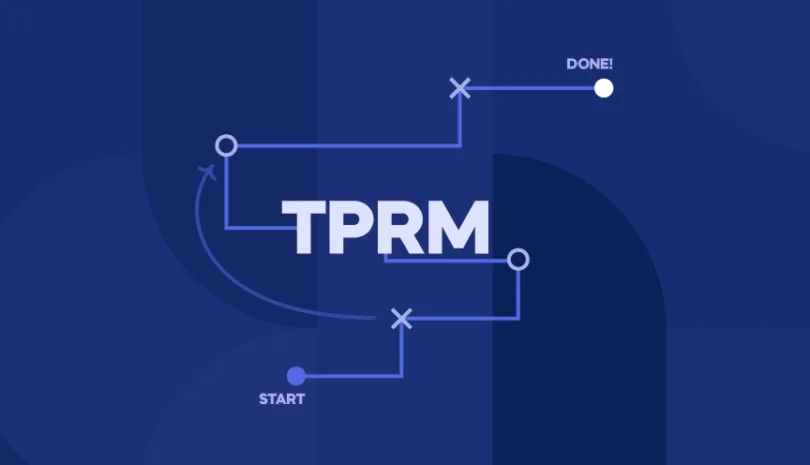Most organizations still rely on time-consuming, spreadsheet-based processes to assess third-party vendors. These outdated methods often slow down onboarding, create “questionnaire fatigue” for vendors, and lead to inconsistent data quality that security teams can’t fully trust. As supply chains expand and regulatory pressures mount, the cracks in manual approaches become clearer.
Automated vendor risk assessments solve these challenges by streamlining due diligence and embedding intelligence into every step of the process. Instead of chasing down spreadsheets or manually scoring responses, organizations can leverage automation to collect, validate, and analyze vendor security data at scale. The result: faster onboarding, higher-quality insights, and a more resilient third-party risk management (TPCRM) program. For companies looking to reduce friction while maintaining strong oversight, automation is no longer optional; it’s the future of vendor risk assessments.
What Are Automated Vendor Risk Assessments?
Automated vendor risk assessments use technology to simplify and enhance the way organizations evaluate third-party security posture. Unlike static, manual questionnaires, which require repetitive effort and offer limited visibility, automated approaches integrate data collection, validation, and monitoring into a single workflow.
For example, automated security questionnaires can pre-fill vendor responses from trusted sources, flag incomplete answers, and score risks in real time. Combined with continuous monitoring and TPCRM workflow automation, this approach ensures that risk assessments aren’t just a one-time box-checking exercise but an ongoing source of intelligence.
In short, automated vendor risk assessments transform vendor due diligence from a slow, manual process into a dynamic system that scales with business growth, improves decision-making, and reduces the likelihood of third-party incidents.
Why Automation Matters in Third-Party Risk Management
Manual vendor risk assessments can no longer keep up with today’s fast-moving business and regulatory environment. Automation brings speed, accuracy, and scalability to third-party risk management (TPCRM). Faster vendor onboarding means teams can integrate new partners quickly without compromising on due diligence. Automated workflows also increase accuracy, detecting vulnerabilities and compliance gaps that might be overlooked in spreadsheet-driven reviews.
For vendors, automation reduces repetitive workloads by pre-filling common responses and standardizing assessments across clients. For security teams, it eliminates manual scoring and follow-ups, freeing time to focus on higher-value analysis. This dual benefit makes automated vendor risk assessments a win-win for both sides.
As industry trends push toward third-party risk automation, organizations that adopt these tools are better positioned to manage growing vendor ecosystems, ensure compliance, and build trust with stakeholders.
Beyond Questionnaires: From Data Collection to Intelligence
Traditional vendor questionnaires generate a lot of raw data but little usable insight. Security teams often spend hours reviewing static spreadsheets, yet still struggle to identify the vendors that pose the greatest risks. Automation changes that dynamic by turning vendor responses into actionable intelligence. Instead of relying on one-off answers, automated platforms enrich questionnaire data with AI-driven analytics, continuous monitoring, and real-time scoring to create a living, dynamic view of vendor risk.
This intelligence-driven approach ensures that risk management is no longer reactive. For example, critical vendors can be automatically prioritized for deeper assessments, while incomplete or non-compliant answers are flagged instantly for follow-up. Automated workflows also help track remediation progress, so security teams know not just where the risks are, but whether they’re being addressed on time.
Integrating third-party risk automation tools means vendor risk profiles remain current long after onboarding. Continuous monitoring pulls in security ratings, threat intelligence, and compliance signals, providing a holistic picture that static questionnaires alone cannot deliver. This shift reduces blind spots, accelerates vendor due diligence automation, and empowers organizations to make proactive decisions before minor issues escalate into major incidents.
By moving beyond questionnaires to intelligence, automated vendor risk assessments transform TPCRM into a smarter, faster, and more resilient program, one that actively supports both business growth and cyber resilience.
Key Features of Effective TPCRM Workflow Automation
Not all automation is created equal. To truly transform vendor due diligence, an effective TPCRM workflow automation platform should include several key capabilities. Smart, auto-filled questionnaires reduce the back-and-forth with vendors, ensuring higher response rates and faster completion. AI/ML-driven risk scoring adds intelligence by highlighting the most critical vulnerabilities and prioritizing them based on business impact.
Remediation workflows built directly into the platform enable security teams to assign tasks, track progress, and close gaps quickly, without needing external tools. Finally, real-time dashboards provide visibility across the entire vendor ecosystem, giving executives and regulators clear, up-to-date reports on third-party risk posture.
Together, these features turn vendor risk assessments into a continuous, intelligent process that scales with organizational growth.
Real-World Impact: What Companies Gain from TPCRM Automation
The benefits of automated vendor risk assessments aren’t theoretical; they’re measurable. For example, a global financial services firm reduced vendor onboarding time by 50% by replacing manual spreadsheets with automated workflows. What once took months now takes weeks, without compromising due diligence.
In healthcare, where compliance reporting is notoriously complex, one provider cut weeks off its audit preparation by using automated security questionnaires and real-time dashboards. Instead of scrambling for fragmented data, the compliance team could generate reports instantly, freeing time for patient care priorities.
These use cases highlight the ROI of third-party risk automation: faster onboarding, reduced compliance effort, and stronger vendor relationships built on transparency. Companies that invest in automation not only save time and resources but also strengthen resilience against third-party cyber threats.
How to Get Started with Vendor Risk Automation
Shifting from manual assessments to automated vendor risk assessments doesn’t have to be overwhelming. Many organizations assume automation requires a complete system overhaul, but the most effective strategies start small and scale over time. The key is to focus on practical, high-impact steps that build momentum and show immediate value.
The first step is to identify the biggest bottlenecks in your current process. Common pain points include questionnaire fatigue from repetitive requests, inconsistent or incomplete data that slows down analysis, and manual reporting delays that frustrate stakeholders. Mapping these challenges helps you target where automation can make the fastest and most visible impact.
Once priorities are clear, the next step is selecting a TPCRM platform that does more than digitize existing workflows. The right solution should integrate automated security questionnaires, AI-driven risk scoring, and remediation workflows that can adapt to your organization’s vendor ecosystem and regulatory requirements.
Implementation works best in phases, starting with your most critical or high-risk vendors. This phased rollout minimizes disruption while allowing teams to see results quickly—such as shorter onboarding cycles, more reliable data, or streamlined compliance checks. Over time, the process can expand to cover the entire vendor ecosystem.
It’s also important to establish metrics and track improvements as automation takes hold. Onboarding speed, questionnaire completion rates, remediation cycle times, and audit readiness are all indicators that can help demonstrate measurable progress and ROI. Sharing these results with leadership builds support for further investment and adoption.
By approaching automation step by step, organizations can transform vendor risk management into a scalable, intelligence-driven process. Instead of being bogged down by manual tasks, security and risk teams can focus on strengthening oversight, reducing exposure, and supporting long-term business growth.
Automated Vendor Risk Assessments: From Burden to Intelligence
Vendor security questionnaires have long been viewed as a burden; time-consuming, repetitive, and often disconnected from strategic priorities. But with automation, they become a powerful enabler of third-party risk management.
Automated vendor risk assessments shift the focus from box-checking exercises to intelligence-driven decision-making. By integrating automation into TPCRM, organizations can streamline workflows, strengthen oversight, and free security teams to focus on strategy rather than spreadsheets. This shift is essential for building resilience in today’s complex vendor ecosystems.
Automated vendor risk assessments aren’t just a technology upgrade; they’re the foundation of next-generation TPCRM. Companies ready to move beyond manual processes can explore how Panorays delivers automation and intelligence to achieve stronger third-party cyber resilience.
Book a personalized demo to see how Panorays can help your organization turn vendor risk assessments into a source of intelligence.
Automated Vendor Risk Assessment FAQs
-
They address the inefficiencies of manual, spreadsheet-based processes. Automation ensures faster onboarding, higher-quality data, and continuous visibility into vendor risks—critical for managing today’s expanding third-party ecosystems.
-
They replace static questionnaires with automated security questionnaires that pre-fill responses, validate data, and apply AI-driven risk scoring. This creates a streamlined TPCRM workflow where vendors submit once, and the system continuously enriches and monitors the data.
-
Vendors face less “questionnaire fatigue” by answering fewer, smarter questions. Automation standardizes assessments across clients, reducing duplicated effort and helping vendors demonstrate compliance more efficiently.
-
Automated platforms simplify reporting by aligning responses with regulatory frameworks like DORA, GDPR, and NIST. Real-time dashboards and audit-ready reports help organizations prove compliance quickly and consistently.
-
An effective solution should offer smart, auto-filled questionnaires, AI/ML-driven risk scoring, built-in remediation workflows, and real-time dashboards for complete visibility. Integration with continuous monitoring tools ensures risk intelligence stays up to date.
By addressing both organizational and vendor challenges, automated vendor risk assessments transform third-party risk management into a faster, more collaborative, and compliance-ready process.



